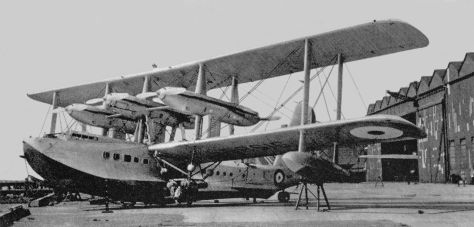
Sikorsky’s factory in Stratford Connecticut completed its first S-42 airliner/flying boat in March 1934 and Igor Sikorsky took at the earliest opportunity the mail boat to Southampton to promote his revolutionary clean looking flying machine in the Old World. His first stop was London where he delivered a glowing lecture with epidiascope projections to the Royal Aeronautical Society. His new ship was fast and it could move passengers far. In fact in the years that followed, Pan American Airways bought ten of them and used them to conquer the Pacific Ocean. The British aviation bigwigs and tech wizards listened in polite astonishment. Igor gave a glowing account of his breakthrough in the design dilemmas that had for thirty years produced only ugly-looking mechanical flying things with a multitude of wings, struts and wires.

Sikorsky had now created a roomy airplane with a single sleek small wing and four beautifully mounted engines. It carried 12 passengers with ease over 2000 miles and it could alight gently at 65 mph on the tops of the rolling waves. Its cruising speed was 160 miles per hour and Igor repeatedly pointed out how this speed in combination with the high wing load made for a comfortable ride, relatively insensitive to wind gusts and sudden vertical up and down air drafts.
The British listened with polite amazement and suppressed skepticism. “We don’t really need speed”, said Mr. Horace Short, the builder of England’s famous double-breasted multi-wing lumbering patrol boats during the discussion afterwards.”When we need speed we’ll have Supermarine win the Schneider Cup or Messrs. de Havilland will build the Comet for winning the Melbourne race. We focus on other things.” He meant safety, a slow landing speed. And it must be said, his boats had an enviable safety record (but could not cross the ocean).
Mr. M.Langley inquired whether Mr. Sikorsky had used Imperial or US Gallons in his specifications. He apparently couldn’t believe the figures and the British ones were a good deal larger.
As to performance, Mr. W.O. Manning conceded frankly that Mr. Sikorsky had put the flying boats used by Imperial Airways completely out of date. He then proceeded to produce a global new design on the lines of the S-42 and showed its superiority.
Major R.E. Penney thought the secret of Mr. S.’s boat could be found in the enormous amount of detail work, the fairing up of the details so that the combined resistances had been reduced to an absolute minimum.

Mr. Scott-Hall mentioned in passing that albatrosses (the birds) had a large wing load but they had trouble getting themselves up in the air. And so there was a lot of back and forth talk about speed and small wings.
Until finally Major F. Green hit on the real issue: “Let’s not overlook the fact that a small wing saves a substantial amount of weight”. And here was of course the quintessence: instead of carrying wing, the airplane could now carry fuel and people. But even Igor did not seem to quite grasp the point. He came back to the subject of speed. “There is no doubt”, he stated, “that planes of great weight, capable of non-stop ocean flights, cruising between 150 to 200 miles per hour, can be designed at this time and be ready for service within two and a half to three years. Greater cruising speeds are possible, but the size of the earth does not warrant greater speeds. The progress of air transportation will benefit more if designers will give more attention to increased passenger comfort and ways and means to lower transportation costs rather than greater speed.”
Well now, would that really be possible Mr. Sikorsky? Are speed and economics independent quantities?
A cat is not a dog and a plane is not a ship.
for the full text of Igor Sikorsky’s lecture, click: https://ritstaalman.files.wordpress.com/2014/12/sikorskya.pdf
see also Part III of Early Atlantic Airliners: ATLAIRpart3
for books on the conquest of the Atlantic by air: http://www.Lindbergh-aviation.de 



